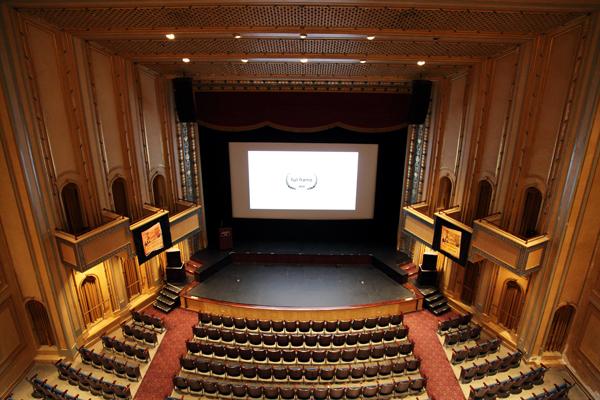Filmmakers and fans alike gathered in Durham this weekend for the Full Frame Documentary Film Festival. It spanned four days, April 3-6, and premiered about 60 new films from a pool of 1,200 submissions.
In the packed Fletcher Hall of Carolina Theatre, Monk with a Camera was one of the first new documentaries screened at the festival.
“It’s sort of a modern-day ‘Siddhartha’ tale,” said Tina Mascara, one of the film’s directors.
But instead of following a man originally from India, looking for spiritual enlightenment, Mascara and co-director Guido Santi document the life of Nicholas Vreeland — a man born in Geneva, Switzerland but raised in other European locales and the United States.
Half the film covers Vreeland’s lineage from his grandmother Diana Vreeland, the pioneering Vogue editor, to his lavish lifestyle before he decided to become a monk in 1985. The other half gazes at the secular, yet glorious aspects of monk life.
The film’s leisurely pace teases out that polarity of Vreeland’s circumstances. Observing him walking down the busy streets of New York City in monk garb and then, in another moment, guiding us through the sparse monastery he first stayed at for more than a decade is not easy to reconcile and is very surreal.
A monk is not without his own problems, however.
After the financial crisis of 2008, Vreeland lost many of the backers for the Rato Monastery he was building in India. As a result, he reverted back to his photography as a saving grace. He resolved to sell many of the photographs he had taken during the years — of his fellow monks and surroundings in Tibet — to help fund the monastery’s continued construction.
Vreeland’s predicament was initially how Mascara discovered him. While researching for the intent of a narrative film, instead of a documentary, about a Westerner becoming a monk, she said she came across his story in an Indian newspaper online.
According to Mascara, Vreeland wasn’t automatically willing to have a documentary made about him. In fact, even after filming one of Vreeland’s photography showcases in Naples, Italy, the directors didn’t know if the collaboration would continue.
“[Vreeland] has since told me that he had to get permission from his teacher, Khyongla Rato Rinpoche, and he also had to get permission from the Dalai Lama himself,” Mascara said.
Both Rinpoche and the Dalai Lama figure in heavily throughout the film as the amazingly kind and inspiring teachers in Vreeland’s life. In one scene, Rinpoche takes out a toy parrot and has it mimic sayings and laughter again and again for the camera. In another, the Dalai Lama grabs Vreeland endearingly by his elongated nose.
Mascara said she and her partner, Santi, were fascinated with Vreeland’s story because of its extraordinary circumstances. As apparent by those in attendance at the Full Frame screening, Vreeland had it all: an iconic grandmother, famous photographers as teachers, wealth and freedom to travel anywhere. It is clear by the documentary that, though he had every materialistic thing he could hope for, he missed something fundamental.
The same can be said of Mascara. Where Vreeland found purpose in the teachings of Buddhism, Mascara found it in film. She grew up in West Virginia but, much like Vreeland, decided to shed the familiar and move across the country.
“I moved to Los Angeles and, for me, the first few years that I was there were a little more bumpy and I was trying to find what I wanted to do,” Mascara said.
It wouldn’t be until she joined the L.A. Film School and met other aspiring filmmakers that her course would change.
“Telling stories with images was the most amazing discovery of my life, and there’s nothing else in the world that excites me more,” Mascara said.
Through the delicate and light-hearted approach of Monk with a Camera, West and East join hands. Film footage and still photography bridges the past with the present. But most importantly, the documentary underlines that there is no time and no reason to remain stuck without what vitally defines you. As Vreeland says in the film, “Life is momentary.”








